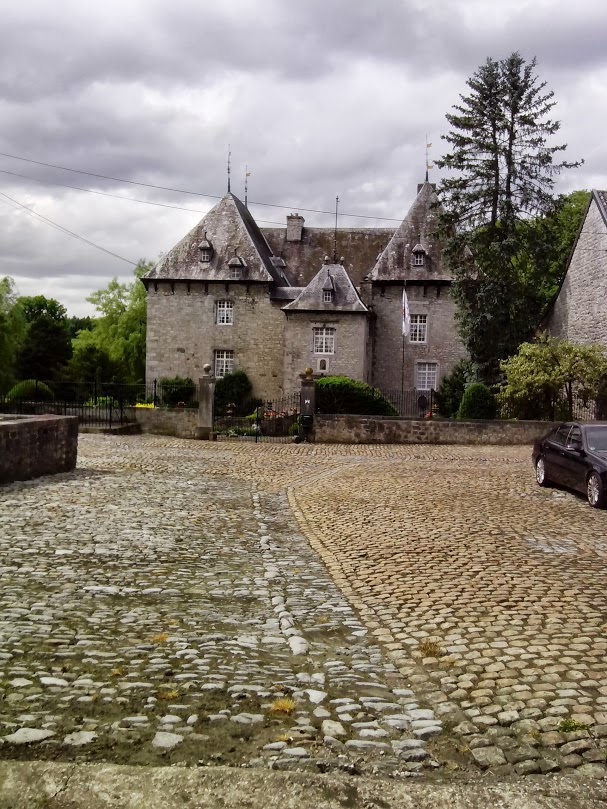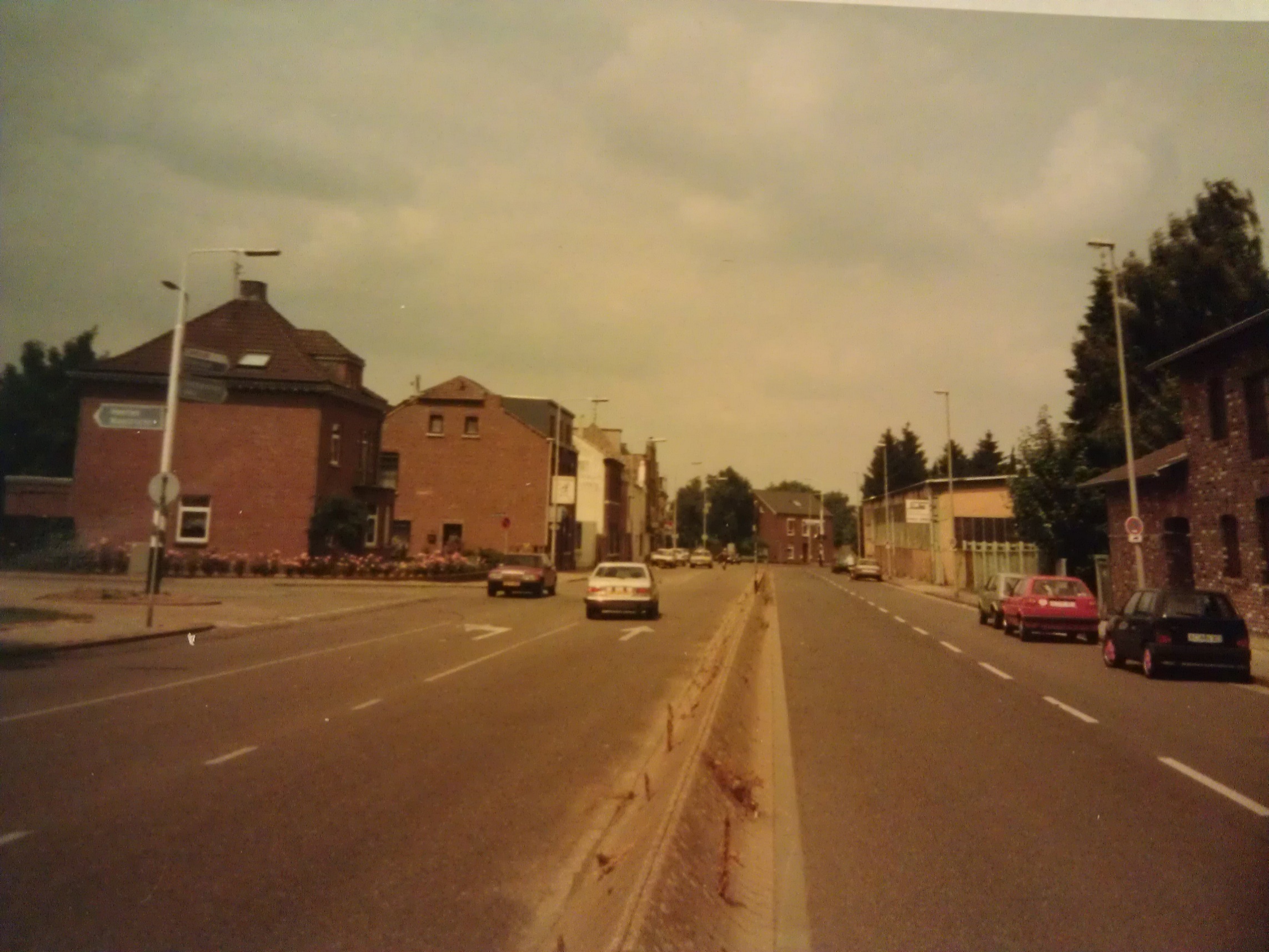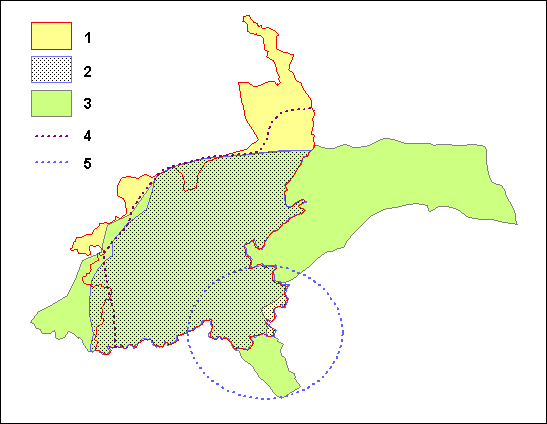|
Southeast Limburgish Dialect
Southeast Limburgish (Dutch: ''Zuidoost-Limburgs'', Ripuarian: ''Süüdoß-Limburjesch''), also referred to as Southern Meuse-Rhenish, is a subdivision of what recently has been named Meuse-Rhenish. Both terms denote a rather compact grouping of varieties spoken in the Limburg and Lower Rhineland regions, near the common Dutch/Flemish (Belgium) and Dutch/German borders. These dialectal varieties differ notably from Dutch and Flemish at the one side, and no less from German at the other. In the Netherlands and Belgium this group is often included in the generic term Limburgish. Limburgish was recently recognised as a regional language (''streektaal'') in the Netherlands and as such it receives moderate protection under chapter 2 of the European Charter for Regional or Minority Languages. The linguistic border of the Limburgish varieties to the South is the Benrath line, to the North it is the Uerdingen line. This means Southeast Limburgish is different in nature from the other Limb ... [...More Info...] [...Related Items...] OR: [Wikipedia] [Google] [Baidu] |
Netherlands
) , anthem = ( en, "William of Nassau") , image_map = , map_caption = , subdivision_type = Sovereign state , subdivision_name = Kingdom of the Netherlands , established_title = Before independence , established_date = Spanish Netherlands , established_title2 = Act of Abjuration , established_date2 = 26 July 1581 , established_title3 = Peace of Münster , established_date3 = 30 January 1648 , established_title4 = Kingdom established , established_date4 = 16 March 1815 , established_title5 = Liberation Day (Netherlands), Liberation Day , established_date5 = 5 May 1945 , established_title6 = Charter for the Kingdom of the Netherlands, Kingdom Charter , established_date6 = 15 December 1954 , established_title7 = Dissolution of the Netherlands Antilles, Caribbean reorganisation , established_date7 = 10 October 2010 , official_languages = Dutch language, Dutch , languages_type = Regional languages , languages_sub = yes , languages = , languages2_type = Reco ... [...More Info...] [...Related Items...] OR: [Wikipedia] [Google] [Baidu] |
Regional Language
* A regional language is a language spoken in a region of a sovereign state, whether it be a small area, a federated state or province or some wider area. Internationally, for the purposes of the European Charter for Regional or Minority Languages, "''regional or minority languages''" ''means languages that are:'' #''traditionally used within a given territory of a State by nationals of that State who form a group numerically smaller than the rest of the State's population and'' #''different from the official language(s) of that State'' Recognition of regional or minority languages must not be confused with recognition as an official language. Influence of number of speakers There are many cases when a regional language can claim greater numbers of speakers than certain languages which happen to be official languages of sovereign states. For example, Catalan (a regional language of Spain, Italy and France, albeit the national language of Andorra) has more speakers than Finni ... [...More Info...] [...Related Items...] OR: [Wikipedia] [Google] [Baidu] |
Eynatten
Eynatten is a village in the Belgian municipality of Raeren, part of the German-speaking Community of Belgium. Eynatten is on the border to Germany, south from Aachen. Around half of the population are non-Belgians, most of them Germans. Eynatten is located on route N68 between Aachen, Germany and the German-speaking Belgian town of Eupen Eupen (, ; ; formerly ) is the capital of German-speaking Community of Belgium and is a city and municipality in the Belgian province of Liège, from the German border (Aachen), from the Dutch border (Maastricht) and from the "High Fens" na .... Eupen is around to the southwest. Frequent bus services run between Aachen and Eupen, stopping at various places in Eynatten en route. External links * Raeren Belgium–Germany border crossings {{Liege-geo-stub ... [...More Info...] [...Related Items...] OR: [Wikipedia] [Google] [Baidu] |
Raeren
Raeren () is a municipality of east Belgium located in the Walloon province of Liège. It was part of Germany until the First World War, after which it became part of Belgium. It is one of several towns in eastern Belgium which predominantly speak German. On 1 January 2006, Raeren had a total population of 10,091. The total area is 74.21 km² which gives a population density of 136 inhabitants per km². The municipality consists of the following sub-municipalities: Eynatten, Hauset, and Raeren proper. Mathias Cormann, the former Minister for Finance of Australia and current Secretary-General of the OECD, was raised in Raeren. Image:Raeren, Sankt Nikolauskirche foto1 2010-09-04 15.57.JPG, Raeren, church: Sankt Nikolauskirche Image:BurgRaeren02.jpg, Raeren Castle See also * List of protected heritage sites in Raeren * German-speaking community of Belgium The German-speaking Community (german: links=no, Deutschsprachige Gemeinschaft, or DG; french: links=no, Communa ... [...More Info...] [...Related Items...] OR: [Wikipedia] [Google] [Baidu] |
Aachen
Aachen ( ; ; Aachen dialect: ''Oche'' ; French and traditional English: Aix-la-Chapelle; or ''Aquisgranum''; nl, Aken ; Polish: Akwizgran) is, with around 249,000 inhabitants, the 13th-largest city in North Rhine-Westphalia, and the 28th-largest city of Germany. It is the westernmost city in Germany, and borders Belgium and the Netherlands to the west, the triborder area. It is located between Maastricht (NL) and Liège (BE) in the west, and Bonn and Cologne in the east. The Wurm River flows through the city, and together with Mönchengladbach, Aachen is the only larger German city in the drainage basin of the Meuse. Aachen is the seat of the City Region Aachen (german: link=yes, Städteregion Aachen). Aachen developed from a Roman settlement and (bath complex), subsequently becoming the preferred medieval Imperial residence of Emperor Charlemagne of the Frankish Empire, and, from 936 to 1531, the place where 31 Holy Roman Emperors were crowned Kings of the Germans. ... [...More Info...] [...Related Items...] OR: [Wikipedia] [Google] [Baidu] |
Vaals
Vaals (; Ripuarian: ) is a town in the extreme southeastern part of the Dutch province of Limburg, which is in the southeastern part of the Netherlands. The municipality covers an area of in the foothills of the Ardennes–Eifelrange and is located about east of Maastricht and west of the city centre of Aachen. It borders on both Belgium and Germany. The three borders meet on the Drielandenpunt, a few meters from the highest point in the European part of the Netherlands, the Vaalserberg. The Vaalserberg used to be called "Hubertusberg". History Its occupation in ancient Roman times might be recorded by its name itself which comes from Latin 'vallis'. It is one of the few places in the Netherlands with a name deriving from Latin. In Roman times, the south of the Dutch province of Limburg was a densely populated part of the Roman empire, with its regional focus on Cologne (Colonia Claudia Ara Agrippinensium), for a while even capital of the Western Roman Empire. ... [...More Info...] [...Related Items...] OR: [Wikipedia] [Google] [Baidu] |
Bocholtz
Bocholtz (; Ripuarian: is a town in the Dutch province of Limburg. It is a part of the municipality of Simpelveld, and lies about 7 km southwest of Kerkrade. Until 1982, it was a separate municipality. History Bocholtz dates back to the Roman era. A Roman villa was found in the Vlengendaal, a street of Bocholtz, in 1911. A farmer plowing his land found a Roman sarcophagus in October 2003. Architecture and buildings Castle De Bongard The Castle De Bongard dates from the 16th century. The current building only represents 1/4 of the original building. The rest was destroyed during the invasion by the French during the Napoleonic Wars. Hoeve Overhuizen Hoeve Overhuizen is a fortified farm with roots dating back as far as the 13th century. From 2015 Rabobank moves in after redecorating the interior of the building to make it their regional headquarters. Church The James the Greater Church was built between 1869 and 1873 by architect Pierre Cuypers. Construction w ... [...More Info...] [...Related Items...] OR: [Wikipedia] [Google] [Baidu] |
Kerkrade
Kerkrade ( Ripuarian: ; li, Kirkraoj; german: Kerkrade or ''Kirchrath'') is a town and a municipality in the southeast of Limburg; the southernmost province of the Netherlands. It forms part of the Parkstad Limburg agglomeration. Kerkrade is the western half of a divided city; it was part of the German town of Herzogenrath until the Congress of Vienna in 1815 drew the current Dutch-German border and separated the towns.Jan Buursink and Nicole Ehlers"The Binational City of Eurode". University of Nijmegen. This means that the eastern end of the city marks the international border. The two towns, including outlying suburban settlements, have a population approaching 100,000, of which nearly 47,000 are in Kerkrade. History The history of Kerkrade is closely linked with that of the adjacent town of Herzogenrath, just across the German border. Herzogenrath began as a settlement, called Rode, near the river Worm (or Wurm in German) in the 11th century. In 1104 Augustinian monks founde ... [...More Info...] [...Related Items...] OR: [Wikipedia] [Google] [Baidu] |
East Limburgish
Limburgish ( li, Limburgs or ; nl, Limburgs ; german: Limburgisch ; french: Limbourgeois ), also called Limburgan, Limburgian, or Limburgic, is a West Germanic language spoken in the Dutch and Belgian provinces of Limburg and in the neighbouring regions of Germany. It shares characteristics with both German and Dutch but has unique features such as tonality. Within the modern communities of the Belgian and Dutch provinces of Limburg, intermediate idiolects are also very common, which combine standard Dutch with the accent and some grammatical and pronunciation tendencies derived from Limburgish. This "Limburgish Dutch" is confusingly also often referred to simply as "Limburgish", although in Belgium such intermediate languages tend to be called ("in-between language"), no matter the exact dialect/language with which standard Dutch is combined. Although frequently misunderstood as such, Limburgish does not refer to the regional variation of Dutch spoken in Dutch Limburg ... [...More Info...] [...Related Items...] OR: [Wikipedia] [Google] [Baidu] |
Sittard Dialect
The Sittard dialect ( nl, Sittards, li, Zittesj, german: Selfkanter Platt, in reference to the variety used in Germany) is a Limburgish dialect spoken mainly in the Dutch city of Sittard. It is also spoken in Koningsbosch and in a small part of Germany (Selfkant), but quickly becoming extinct there. Of all other important Limburgish dialects, the dialect of Sittard is most closely related to that of the . Characteristics The Sittard dialect belongs to , which means it has a postalveolar consonant at the onset of words beginning with clusters such as ''sl'' and ''st'', in contrast with other variants of Limburgish such as Maastrichtian and in Dutch. The most important characteristic which distinguishes the dialect of Sittard from adjacent Limburgish dialects is the so-called Sittard diphthongization, i.e. the replacement of the close-mid monophthongs , and with the wide diphthongs , and in some words such as ''neit'' ("not", originally ''neet'' ), ''zuike'' ("to search", ... [...More Info...] [...Related Items...] OR: [Wikipedia] [Google] [Baidu] |
Southern East Limburgish
Southern may refer to: Businesses * China Southern Airlines, airline based in Guangzhou, China * Southern Airways, defunct US airline * Southern Air, air cargo transportation company based in Norwalk, Connecticut, US * Southern Airways Express, Memphis-based passenger air transportation company, serving eight cities in the US * Southern Company, US electricity corporation * Southern Music (now Peermusic), US record label * Southern Railway (other), various railways * Southern Records, independent British record label * Southern Studios, recording studio in London, England * Southern Television, defunct UK television company * Southern (Govia Thameslink Railway), brand used for some train services in Southern England Media * ''Southern Daily'' or ''Nanfang Daily'', the official Communist Party newspaper based in Guangdong, China * ''Southern Weekly'', a newspaper in Guangzhou, China * Heart Sussex, a radio station in Sussex, England, previously known as "Southern FM" * 88 ... [...More Info...] [...Related Items...] OR: [Wikipedia] [Google] [Baidu] |
Uerdingen Line
The Uerdingen Line (german: Ürdinger Linie, Uerdinger Linie, nl, Uerdinger linie; named after Uerdingen by Georg Wenker) is the isogloss within West Germanic languages that separates dialects which preserve the ''-k'' sound in the first person singular pronoun word "ik" (north of the line) from dialects in which the word-final ''-k'' has changed to word final ''-ch'' in the word "ich" (IPA ) (south of the line). This sound shift is the one that progressed the farthest north among the consonant shifts that characterize High German and Middle German dialects. The line passes through Belgium, the Netherlands, and Germany. North of the line Low German and Dutch are spoken. South of the line Central German is spoken. In the area between the Uerdingen line and the Benrath line to its south, which includes parts of Belgium and the Netherlands, the Germanic dialect Limburgish is spoken. Especially in eastern Germany, the regional languages have been largely replaced by standard German ... [...More Info...] [...Related Items...] OR: [Wikipedia] [Google] [Baidu] |




